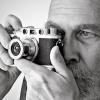How to adjust for viewfinder inaccuracies on Leica IIIf | Summitar 50mm f2
-
Recently Browsing 0 members
- No registered users viewing this page.
-
Similar Content
-
Leica IIIf review 1 2 3
By jbgeach,
- 48 replies
- 13,729 views
-
- 3 replies
- 1,034 views
-
- 12 replies
- 560 views
-
- 5 replies
- 425 views
-
- 40 replies
- 10,997 views
-





Recommended Posts
Join the conversation
You can post now and register later. If you have an account, sign in now to post with your account.
Note: Your post will require moderator approval before it will be visible.